Magia Draconis:
On the Mingling of Sword and Sorcery.
In the world of Eya, Science and Magic are one, but even more they represent a concept of advanced art that spills into other arenas. Some of the worlds greatest swordsmen are said to be the Sword Lords who have advanced their art into a state of wizardry (though it is said others maintain the focus more clearly and that the Sword Lords followers, dance their way into witchery before they fully perfect the forms of the blade). These rules of conflict are expressed in terms of the magical techniques because at their extreme all arts take on the aspect of Wizardry. 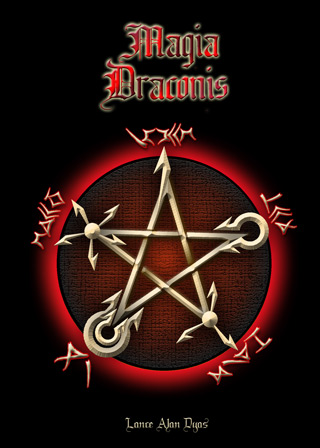 Rather than elaborating the myriad specific maneuvers possible and their effects we will be concentrating on defining broad styles within which your imagination can express itself and yet which maintain consistancy and logic across all forms of conflict.
Rather than elaborating the myriad specific maneuvers possible and their effects we will be concentrating on defining broad styles within which your imagination can express itself and yet which maintain consistancy and logic across all forms of conflict.
The primary strategems in conflict are herein named after the techniques of penetration and warding used in Dragon Magic, this is a matter of convenience and it is known more universally than other naming conventions, such as the secret toungue used by the Sword Dancers or Mayenish gladiatorial gestural lingua. Although the Dragon Masters are not known to use the pentagram where as the Sword Dancers do indeed use its form in actual practice.
Preferred Fighting Style
Each character has a preferred strategy (Abdek, Thena, Thrag, Ahn, Krez) as well as a Preferred Risk / Aggression (risky, somewhat risky, balanced, cautious, very cautious).. This style
generally established when the character learned to fight, and associated with their personality and/or their teaching. This allows your combatant to be categorized allowing you to visualize their battles in a general way even if fighting is an infrequent thing.
The Dominance Pentagram is used at the begining of the conflict to define modifiers to all combat actions between any given pair of combatants as follows.
Essentially you recieve a +2 bonus to the combatant whose preferred style is counter clock-wize of his adversaries. Clockwise dominance via the inner star only grants a +1 bonus as appropriate. Hence Abdek vs KreZ vs Ahn vs Thrag vs Then - etc grant +2, Abdek vs Thrag vs KreZ vs Then vs Ahn vs Abdek grant a +1 .
The Magical Connection: Generally ones style at fighting is independent of the Techniques used in magic. But the connection between personality and Wizardry is very strong. Mages "may" find their preferred fighting strategy shift strangely to match their gift with highest magical technique.
Taking the conflict pentagram a step further, this involves secret selection of a different technique each clache, one way to regulate this is by using 5 suitably marked cards ( a gestural version of thsi is elaborated below) one of which is played by each player face down each turn. This can be allowed to have more dramatic effect as a character isn't "nailed down" atleast not very long by a single choice. The outer circle is a "definite bonus" (+4) in counter clockwise direction , also the star pattern grants a lesser bonus" (+2 ) in a clockwise direction. When the cards are turned over the maneuver should be described in a suitable fashion. Below under the name of each technique is information to help this part of the process.
Realistically most combat strategems contain elements of all techniques, for game play characterisation obviously we are simplifying by choosing only one or two techniques to characterize 5 to 20 seconds of action.
Normally when using the CUT method, preferred style is expressed in a characters active choices but for added detail and impact you may even combine both "Preferred Fighting Style" and the "Currently Used Technique" options.
Another option which may actually make description easier, involves choosing a technique for attack and defense actions separately.
Description of Physical Combat Styles

Abdek - Order & Truth
This style invokes the perfect and flawless, it's very much a "schooled in battle" style. If your are closer to perfection than your opponent, you will win. Efficiency as in economy of motion and precision of form is emphasized. This is perhaps the most internally aware style its practitioners often enter a state of self hypnosis from which they express confidence and truth of form. Your attacks often get through your opponents defenses by brute force and purity of purpose.
Quote: "May the better man win. "
Maneuver Types: Mostly fast straight forward, relatively simple and efficient maneuvers which don't involve too much interpretation of your opponents current actions. Whatever moves this style is applied to the focus becomes correctness of form.
Examples: "basic strikes" "stopping parries" -> ie "blocks ", "pure retreats"
Flaw : somewhat predictable it is what it seems.
Adversary Styles : To Ahn it seems like you are broadcasting your next move, though they are less able to exploit it than Then. You cut through KreZs chafe and tend to ignore Thrags deceptions completely.
Benefits: amongst the most precise, and decisive very quick often the least fatiguing of effects.
Then / Control & Redirection 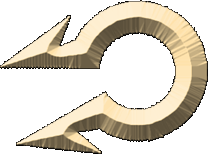
This style is about mastering your opponent and accuracy. Compelling / Redirecting the actions an opponent in a directed fashion can defeat them or make them easier to defeat. These moves are themselves strongly adjusted and controlled to suit the immediate situation and adversaries apparent position.
Quote: "Playing your opponents game is a guaranteed way to loose, make them play yours."
Maneuver Types: These maneuvers try to use and change what your opponent is attempting into what you would rather it be. Sometimes the real benefit kicks in next round.
Examples: "locking weapons" "diverting parries" and "dodges","planned retreat / escapes", "throws","maneuver opponent onto bad ground"
Flaw: assumes accurate understanding of your opponents game...
Benefits: some of the most accurate of actions and can be very devestating in effect.
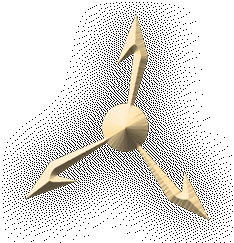 Thrag / Disception
Thrag / Disception
Complexity is a part and parcel to this style. All ones actions are indirect if not completley changing from one moment to the next. This style is about misdirection even when it isn't out right deception. Your moves are sometimes intentionally complex and cannot be assumed to be what they appear at first glance. In wrestling this is the slipperyness your adversary cannot get a grip on.
Maneuver Types: This includes some of the trickiest and complex maneuvers.
Quote: "Assuming too much will be your downfall"
Examples: "spinning feint"; "subtle feint" various "fakes" and "flourishes" "blinding powder in the eyes" and other combat "tricks" as well false openings like "trapped doe" and pretense of inferiority or superiority. "change ups" and "weapon switches".
Adversary Styles : Ahn is the only style which really knows what this style has in store, Then falls hook line and sinker or at best assumes badly. KreZ can't resist nibbling, but Abdek out right ignores the trickiness and complexity.
Flaw: Much effort is spent to no real end these are often less efficient than other styles (and even a subtle feint is planned and can be read by those who chose).

Ahn / Patient Perception
This is considered by some the thinking mans style for you analyze the moves of your opponent, predict them, then finally act with certainty. All acts in conflict involve an element of dissemination and if you know your opponents plans your maneuvers can undermine and exploit them completely. If you are its master there is no "fog of war". This style tends to appeal to the patient and those who refuse to be fooled.
Quote : They who know the truth cannot be decieved "
Examples: "reading" and "scanning" of your adversary "looking for opportunities" , finding openings "for attack" or "for escape", "finding the best position of advantage.
Flaws: Takes the most time ensuring certainty... often little is left and assumes a planned action of some sort from ones adversary so continually adjusted plans(Then) and unplanned actions (KreZ) defeat it.
Benefits: Ahn effects normally are most often useful "next round" - ie they carry over allowing results more extreme than otherwize achievable.
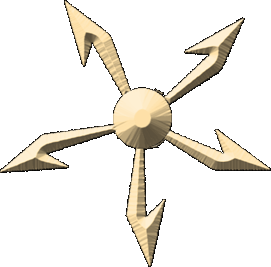
Krez / Wild Instinctual Chaos
This is the style in which one cultivates instinctual and to some extents "natural" "ultimately quick" and "wild" destructiveness. Your attacks get through the cracks in their defenses not by aiming but rather by attacking everywehere. This is sometimes considered a barbaric style, even anti-intellectual, but fighting is a very solid instinct amongst all living things. You make your adversaries world so dangerous their indecisiveness will kill them. Its masters are more ofen comfortable with improvised weapons than others.
Quote: "You will wreap the whirl wind"
Examples: "Wall of Steel"; "Fancy Footwork" "Bob and weave","Wild Flurry","multilimbed / multiweapon barrage"
Flaw: lacks true follow through and tends to be interupted by resolute quick planned actions (Abdek and Thrag to a lesser degree.)
Benefits: Fastest and "truly" unpredictable this style is often dangerous even in defense.
Combat Time
One thing to remember in your descriptions is a round of combat is a variable length of time and which combination of techniques can influence exactly what that variable time is. Typically if there is a strong dominance involved the round goes quicker and a moderate dominance is still faster than a no dominating strategy situation. Predominantly defensive behavior generally takes longer to resolve an action.
One way of managing this in an "ahem" far too mechanical fashion is to have the strategy of each combatant contribute to the time of resolution according to their position on the circle of dominance... KreZ adds 0 seconds, Abdek adds 1 second, Then adds 2 seconds, Thrag adds 3 seconds and Ahn adds 4 seconds, a tied strategy is 12 seconds base, a somewhat dominant strategy has 6 seconds, a fully dominant strategy resolves fastest and is based only on the sum of the two strategies contribution
Is Carry Over Imbalance or Position Gain?
The answer is that it is both.. The risk the defender spent is the basis of position gain and the risk their adversary spent is the basis of their imbalance. Imbalance is in fact more significant on many fronts as it impairs your ability against any adversary not just the specific one. ( It may be reasonable to halve imbalance or allow it to be reduced by 1 per 2 levels of skill)
Imbalance may represent other things than being "physically imbalanced" including loosing your weapon, temporary blinding ? classic sand in the eyes, being stunned etc. It's all right to use your imagination.. ) Attacks like trips and throws which target your opponents balance may seem to do all imbalance, but often leave you in a better position to exploit that imbalance as well.
Carrying over the benefits of one round to the next is the standard affect of an Ahn Technique) but can sometimes be side effect of Abdek and KreZ, or intensional effect of others. In any event the player may choose whether they wish to apply the impact of the action to this round or make it carryover. Most defensive actions are purely carryover.
Agressiveness and The Choice of Risk
This is less central to what is being presented here as it is independent of the Techniques. However in the context of introducing more interesting choices it stands to reason one might also want to allow more reasonable ones. Ars Magicas combat currently gives 3 wildly dramatic options in regards to "aggressiveness", they are acting "fully balanced ", "All out Attack +6" and "All out Defense +6". These are ahem not really realistic and the lack of subtlety deprives players of choices in expressing their characters personalities in conflict.
Current Aggressiveness
The method of making this choice more appropriate is very simply to allow aggressiveness / defensiveness a gamut of values. This modifier should affect the attack and damage roll / as well as defense and soak rolls ( In real life when you point deadly weapons at people there is still a chance they will get hurt even when you are just defending). This is analogous to Currently Used Technique and can chosen / modified each turn. Used in combination with Preferred Aggressiveness described below I suggest a range of +4 to -4, as this allows preferred Aggressiveness to account for the final extremities of action (if you feel player choices should actively express the characters preferrences allow +6 to -6). Six sided dice of differing colors could be used to nicely record the aggressivenes of story guide controlled characters.
Notice "Aggressive ie Risky Defenses" keep you closer to your adversary to maintain a position of attack and are more often parries and blocks.
Preferred Risk
This option is favored for use with the Preferred Fighting Style. Aggressive tendencies like Preferred Style are similarly affected by both training and personality (though don't always cement themselves until the influence of some initiating experience).
Very Bold : +2 Damage, -2 Soak , +2 Attack, -2 Defense
Risk Taker: +1 Damage, -1 Soak, +1 Attack, -1 Defense.
Balanced Combatant: The conflict style is generally encouraged by many soldierly training programs, and is never the less not as common as you might think.
Cautious: -1 Damage, +1 Soak, -1 Attack, +1 Defense.
Very Cautious: -2 Damage, +2 Soak , -2 Attack, +2 Defense.
The above modifiers should be calculated ahead of time and integrated into your combat numbers.
These rules can indeed be used in Wizards Duels, and some might say it is doubly suited since this is really where combat with mages is usually going to occur and hence using the Techniques to describe it is most appropriate. No matter what the type of magics involved is the players choose a "usage technique" or "application method" . If you Abdek a cage of bone it would probably be a Then application of a Abdek Animal for instance.
Clarifications
or Is it Then or Thrag... Ahn or Then?
"Results" can be much the same with differing methods / styles of
performance. For instance "Kicking somebody in the leg", may occur
because of a "multilimbed barrage" or a "take the best opening to put
him off balance" or "do a leg sweep" or even the explicit "front kick
to the shin". The same result can come up under different styles, it is important to differentiate result and method/technique.
There are overlaps in the concept and descriptions of Thrag and Then. An adjusted attack which is changed in response to what fairly obviously appears to be happening is Then, where as an attack made complex enough by changes and indirection hence requiring special effort (Ahn) to predict is a Thrag.
Additionally Then contains elements of perception just as Ahn, but it responds to what it sees, pretty much as it sees it, this different than Ahn which makes certain.
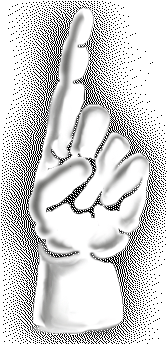
abdek - Proactive

then - Responsive
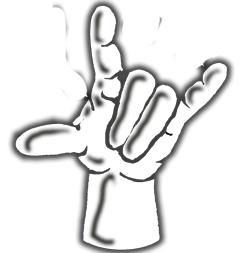
Thrag - Deceptive
|
Gestra, Attak or Katta
ATTAK is a combination of the first letters of the Dragon Words associated with each of the styles / techniques. ( Abdek, Then, Thrag, Ahn and Krez)
KATTA, nicely parallels the Martial Arts word meaning forms and shows the progression from Instinctive through Analytical.
Gestra, is the latin basis for the word guesture
They are both names of a game, play tested with the aide of my son, it involves rolling both your hands over themselves thrice, then choosing your strategy with a gesture on one hand and your risk with the gesture on the other hand ( number of pointing fingers do risk).
If your strategy defeats theirs using the pentagram you do the average of both risk in "damage" if you fully dominate their strategy you get the sum of both risks as the damage. You may picture the damage as being classical "hit" points or as the process of penetrating a wizards mystical shielding. If both combatants have 20 hero points or shield points... then the conflct "can" be finished in 2 full rounds of action, but the odds of that are rather slim additionally you can make each round an attack or a defense or ignore the distinction, the later speeds up the resolution.
Mages vs Warriors is a little more of the fastest gun winning situation as neither seem to have good defenses against the forces martialled by the other. Increase the "damage" a suitable amount might be reasonable(+4) to reflect this along with allowing both sides a partial win on a tie situation. Warrior wizards can function as either during a clash making them versatile.
The gestures used actually flow pretty well and each has progressively more pointing fingers (aim them at your opponent) to them and actually feel like you are wizards in a duel.
This can be played quite indepedently of roleplaying ofcourse.
I know it seems strange to have 3 names for a simple game but if you look around you will find Roshambo has many names as well. |
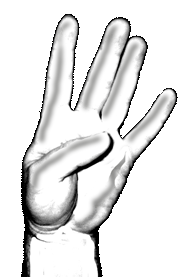
Ahn - Analytical
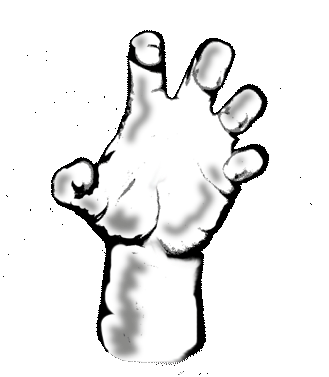
Krez - Instinctive |
Back to the Decision Driven Rolegaming Resource Center
 Rather than elaborating the myriad specific maneuvers possible and their effects we will be concentrating on defining broad styles within which your imagination can express itself and yet which maintain consistancy and logic across all forms of conflict.
Rather than elaborating the myriad specific maneuvers possible and their effects we will be concentrating on defining broad styles within which your imagination can express itself and yet which maintain consistancy and logic across all forms of conflict. 

 Thrag / Disception
Thrag / Disception





